If taxes were voluntary, the Government would almost certainly have a lot less money with which to provide public services. But while we may grumble about the amount we lose in income tax and National Insurance, VAT and fuel duty, when it comes to investments there are all kinds of ways to shelter them from tax.
Just about every asset class comes with the option of tax-efficient or tax-free returns, and not just through the better known schemes such as Isas.
Your clients may already have an accountant to assist them with day-to-day tax mitigation, but advisers are singularly well placed to help them save even more. So what assets can be held tax-efficiently and what are the structures that can be used?
Few assets are inherently tax-efficient. While growth in the value of a principal residence is not subject to capital gains tax, a home is a home and should not necessarily be viewed as an investment. But most assets come with a choice of tax-efficient returns if they are held through the right structure.
Cash, shares and bonds can all be held in an Isa, for instance, as can property if it is held via a fund. The same goes for collective investments such as investment trusts, Oeics and exchange-traded funds while racier options such as venture and development capital investments can benefit from tax reliefs through Government-backed schemes designed to boost investment in small businesses.
Within the alternative investment arena, meanwhile, there are some more obscure yet interesting tax-saving opportunities – clocks, for example, are deemed ‘wasting’ assets and are therefore not subject to capital gains tax. Fine wine, however, is not generally deemed a wasting asset, although there are plenty of ‘wine investment specialists’ who would have your clients believe otherwise.
However, before you suggest that any of your clients convert all their ready cash into grandfather clocks, it is worth looking at the tax-efficient structures available for more mainstream investments.
* Capital-secure options: The most obvious capital-secure tax-efficient investment is the cash Isa. For the 2011/12 tax year, up to £5,340 – half of the overall Isa allowance – can be held in cash. At the time of writing, according to Moneyfacts, almost all of the top 10 cash Isas were paying 3%-plus interest free of income tax, some of them on deposits of as little as £1.
However, in order to preserve more of the available Isa allowance for stocks and shares investments, your clients may also want to consider the Government-backed National Savings & Investments.
Fixed-interest and Index-linked Savings Certificates pay tax-free returns for lump sum investments over set periods. The index-linked version guarantees to beat the rate of inflation, providing a real return that may be hard to achieve elsewhere. There were no issues of Savings Certificates available as we went to press, but the Government had signalled its intention to reintroduce the products in May 2011.
Also from National Savings & Investments, Premium Bonds offer no guarantee of a return but they do offer the opportunity of winning up to £1m tax-free in monthly draws. Minimum investment is £100 and capital is secure, although its value will naturally be affected by inflation over the long term – as anyone who has a handful of Premium Bonds bought in 1962 will attest.
For very small investments – a maximum of £25 a month – friendly society bonds are insurance-based contracts offering tax-free returns, although charges are high and structures opaque, meaning the value of the tax saved could be overshadowed.
* Capital-at-risk options: Tax-efficient investments with greater reward potential than cash can broadly be split into two camps – tax benefits now (upfront tax relief) and tax benefits later (tax-free returns). As capital is at risk from market fluctuations, clients should be left in no doubt all these are best viewed as longer-term investments.
The most obvious recipient of upfront tax relief is the pension scheme. Investors receive relief on contributions of up to £50,000 a year at their highest income tax rate, although this is only applied automatically at the basic rate and 40% or 50% tax relief will need to be claimed via the client’s tax return. This tax relief on the way in means that, for £100 of gross pension contribution, the actual cost to a basic-rate taxpayer is £80, or £60 for a 40% taxpayer and just £50 for someone paying the top rate of tax.
Through a pension scheme, investors can hold a variety of assets including shares, funds, bonds and cash (through money market funds), while self-invested personal pensions offer an even greater choice of investments that can encompass individual properties as well.
The potential downside of pensions is that the money is locked in until at least the age of 55, although after that age up to 25% of the fund can be taken as tax-free cash, meaning there is the potential to double up on tax savings. However, doubling up is as far as it goes, since the recycling of tax-free cash – that is, putting it back into a pension and receiving tax relief all over again – was outlawed in 2006.
The rest of the pension pot is used to provide an income – usually through an annuity – which will be taxable if it exceeds the income tax annual personal allowance, which is £7,475 for under-65s in the 2011/12 tax year, rising to £10,090 for the over-75s.
VCTS and EISs
Upfront relief is also available on venture capital trusts (VCTs) and enterprise investment schemes (EISs), both of which are designed to reward investment in the kind of small and growing businesses the Government is hoping will help the UK economy out of its present difficulties.
VCTs are arguably simpler, give 30% income tax relief on investments of up to £200,000 a year, and pay tax-free dividends. EISs now also offer 30% income tax relief – it was previously 20% – on investments of up to £500,000 a year – a figure that is set to rise to £1m in 2012.
With EISs you can carry forward unused allowances from the previous year, and losses can be offset against your income or capital gains tax liability. Income from EISs is taxable, although EIS investments are exempt from inheritance tax after two years while VCTs are not. Profits from both types of scheme are free of capital gains tax. The minimum holding period for VCTs is five years, compared with three years for EISs.
A stocks and shares Isa may not offer upfront tax relief but it is free from income tax liability on dividends (with the exception of the 10% dividend tax) and capital gains tax liability on growth. Up to £10,680 can be invested in a stocks and shares Isa in the 2011/12 tax year, providing a client has not also invested in a cash Isa in the same tax year, in which case the total for both Isas combined is £10,680.
In spite of the name, a stocks and shares Isa is arguably more likely to hold collective funds such as Oeics, investment trusts or exchange-traded funds than it is to hold individual shares or bonds. There are funds available for almost every client’s risk appetite, from lower-risk bond funds to mainstream equity funds, multi-manager funds, absolute return funds, property funds and even funds of hedge funds. One of the side benefits of the Isa is that it does not need to be declared on the client’s tax return, meaning less tedious form-filling.


